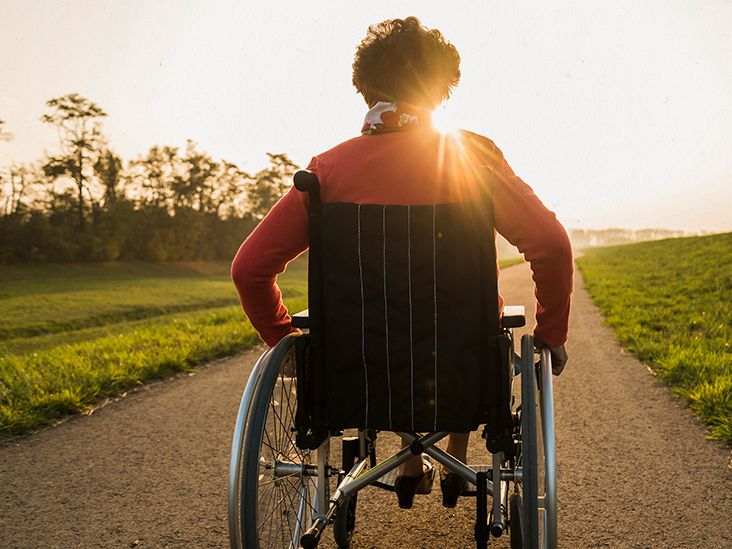Huntington’s disease is a rare and incurable hereditary disorder that damages brain cells. Early signs include coordination problems and memory lapses. In the later stages, people may need full-time care.
Huntington’s disease (HD) is an inherited neurological condition that happens when a gene mutation causes toxic proteins to collect in different parts of the brain.
HD, also known as Huntington’s chorea, leads to symptoms that may impact movement, behavior, and cognition.
According to the Genetic and Rare Diseases Information Center (GARD), less than 5,000 people in the United States are living with HD.
This article discusses the symptoms and causes of HD, as well as various methods to help a person manage their symptoms.
HD causes a variety of physical, behavioral, and cognitive symptoms that typically appear in people aged 30–50.
However, 5-10% of people with HD develop symptoms before age 20. This is called juvenile Huntington’s disease and may progress more quickly.
Approximately
The types, frequency, and severity of HD symptoms may also vary between individuals. For example, some may experience depression first and then changes in their motor skills, while others may show physical signs.
Physical symptoms
HD may cause symptoms that affect a person’s stature and gait, as well as voluntary and involuntary movements.
Other symptoms of HD may include:
- difficulty speaking, swallowing (dysphagia), or eating
- weight loss, which may weaken a person’s immune system
- difficulty walking, such as stumbling or losing balance
- rigidity, which is more common in juvenile HD
Chorea is the most common involuntary symptom of adult HD. These are uncontrollable movements like spasms, jerks, and twitches that may affect any body part.
Other involuntary symptoms of HD may include:
- akinesia
- loss of coordination and control of movements
- seizures, which are more common in juvenile HD
- unusual eye movements
- dystonia
- Babinski reflex
- clonus
Over time, uncontrollable movements occur more often and usually with more intensity. Eventually, they may become slower as the muscles become more rigid.
Behavioral symptoms
Approximately 40% of people with HD will develop depression at some point.
Other mental health conditions that may affect people with HD include:
- obsessive-compulsive disorder (OCD)
- mania
- delusional disorders
Other behavioral symptoms of HD could include:
- aggression, hostility, or frustration
- insomnia
- polyphagia
- irritability
- moodiness
- hypersomnolence
- alcohol-use disorder
- stubbornness
Cognitive symptoms
HD may cause brain alterations that could affect a person’s emotional and cognitive functions, including:
- memory loss
- apathy
- hallucinations
- lethargy
- brain fog
- a reduction of organizational skills
- confusion or disorientation
- difficulty focusing, multitasking, or driving
- trouble learning new things
Cognitive symptoms typically worsen over time and may lead to dementia. Eventually, someone may
According to the Huntington’s Disease Society of America (HDSA), the risk of suicide in people with HD is up to 10 times higher than the national average.
The HDSA recommends that loved ones and caregivers of people with HD are aware of the signs of suicide ideation.
Help is out there
If you or someone you know is in crisis and considering suicide or self-harm, please seek support:
- Call or text the 988 Lifeline at 988 or chat at 988lifeline.org. Caring counselors are available to listen and provide free and confidential support 24/7.
- Text HOME to the Crisis Text Line at 741741 to connect with a volunteer crisis counselor for free and confidential support 24/7.
- Not in the United States? Find a helpline in your country with Befrienders Worldwide.
- Call 911 or your local emergency services number if you feel safe to do so.
If you’re calling on behalf of someone else, stay with them until help arrives. You may remove weapons or substances that can cause harm if you can do so safely.
If you’re not in the same household, stay on the phone with them until help arrives.
HD results from a gene mutation on chromosome 4 of huntingtin (HTT).
This genetic mutation is caused by the excessive production – or trinucleotide repeats – of cytosine, adenine, and guanine (CAG). These are three building blocks of DNA.
Normally, CAG repeats
This change results in a longer form of the HTT protein, which is then cut into small harmful cells that could bind together. As the toxic protein accumulates in the brain, it begins to damage certain brain cells. This causes symptoms.
If the repetition is 36–39, a person may or may not develop HD. If it repeats 40 times or more, a person will almost certainly develop the condition.
How is Huntington’s disease passed on?
HD is an autosomal dominant disorder. This means a person may have it if they inherit one copy of the mutated gene from either parent.
A person with the gene mutation has one typical copy of the gene and one mutated copy. Any offspring will inherit either the typical copy or the mutated one. A child who inherits the typical copy will not develop HD, while a child who inherits the mutated copy will.
Each child has a
A person who does not inherit the gene mutation will not develop the disease and cannot pass it on to their children.
To diagnose HD, a doctor will perform a physical examination and ask a person about their symptoms, and family and medical history.
A combination of physical, behavioral, and cognitive symptoms along with confirmed HD in a person’s family is
However, it may be hard to diagnose symptoms of HD if none of the person’s family members have previously received a diagnosis.
To rule out other diseases, a doctor may perform further tests, such as:
- Laboratory: These may help a doctor rule out other conditions that may cause similar symptoms.
- Magnetic resonance imaging (MRI): An MRI may help identify changes in the brain structure, as it may show signs before clinical manifestations appear.
- Genetic tests: These test for CAG repetitions and are the
gold standardTrusted Source test.
If a doctor thinks a person may have HD, they will refer them to a neurologist.
HD is currently incurable. Treatment cannot reverse its progression or slow it down.
However, medication and other therapies may help people manage some of their symptoms.
Medications
Tetrabenazine (Xenazine) and deutetrabenazine (Austedo) are two drugs that have been approved by the Food and Drug Administration (FDA) to help treat involuntary movements that may occur with HD.
They may pose side effects that could be harmful. If a person has signs of depression or mood changes when taking these drugs, they should contact a doctor.
Antipsychotic drugs may help control movements, outbursts, and hallucinations. These may include:
- clonazepam (Klonopin)
- haloperidol
- clozapine (Clorazil)
Psychotropic medications may help manage psychological symptoms and disorders. These may include:
Other drugs that may benefit people with HD are currently undergoing clinical trials.
Speech therapy
Huntington’s disease may cause severe problems with controlling the muscles of the throat and mouth. This could make it difficult for the person to speak, swallow, and eat.
Speech therapy may help a person improve these skills and reduce the resulting challenges.
A speech therapist could also teach a non-verbal person how to communicate without speaking, for example, by using a board with images of items and activities in everyday life.
Physical and occupational therapy
A physical therapist may help improve a person’s muscle strength, flexibility, and balance.
They can develop and modify a person’s exercise plan to meet a person’s changing physical state. A therapist may also advise them on using supporting devices like a wheelchair or walker.
An occupational therapist may assist the person with additional supportive devices that help with daily functioning, such as handrails throughout the home, specialized eating and drinking utensils, and devices that help a person shower or dress.
Genetic testing for HD became possible in
If people want to have a child and one parent has the gene mutation, they can have in-vitro fertilization (IVF) treatment. The embryo is then genetically tested in a laboratory and doctors only transfer it if it does not have the gene mutation.
A fetus may also undergo genetic testing during gestation if there is a family history of the disease. Doctors do this using a tissue sample from the placenta at 10–11 weeks, or through an amniocentesis at 14–18 weeks.
Can you live a long life with Huntington’s disease?
Most adults with HD live for
What are the 4 main symptoms of Huntington’s disease?
HD is a hereditary condition that causes damage to a person’s brain cells. This may cause symptoms that are:
- physical
- behavioral
- cognitive
- emotional
Some symptoms of HD may include:
- uncontrollable movements like jerks or twitches
- affected posture or gait
- memory loss
- depression
- agitation, irritation, or frustration
- trouble speaking, swallowing, or eating
Huntington’s disease may have a significant impact on the lives of an individual and their loved ones.
Although there is currently no cure, researchers have been looking for ways to use gene therapy to cure, slow, or prevent HD.
In 2017, scientists from Emory University suggested that some CRISPR-Cas9 techniques may help prevent HD in the future. Experiments in mice have shown “significant improvements” after three weeks. Most traces of the damaging protein had gone, and the nerve cells showed signs of healing themselves.
Additional studies have
Meanwhile, organizations such as the HDSA offer support for people with the condition and their families.



